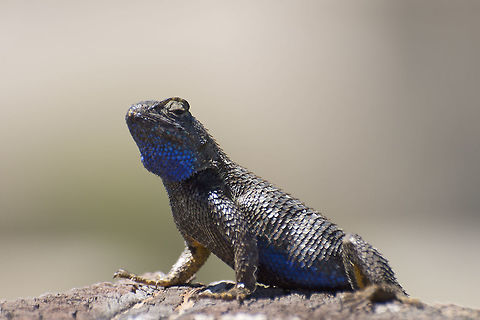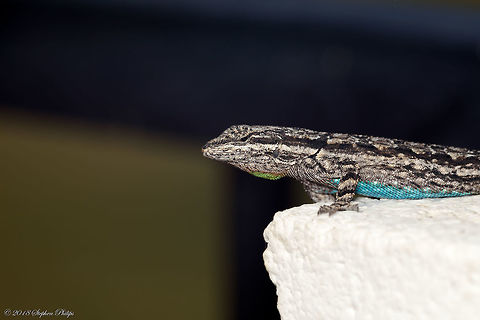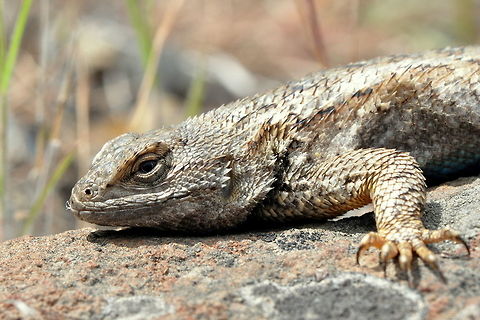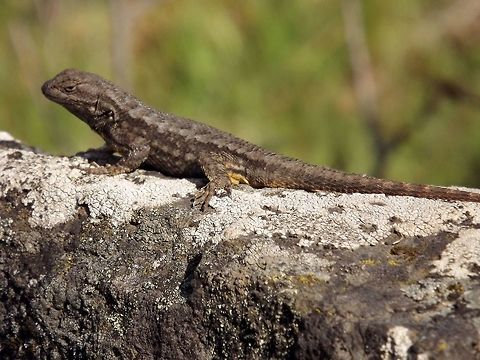
Appearance
Western fence lizards measure 5.7-8.9 cm and a total length of about 21 cm. They are brown to black in color and have black stripes on their backs, but their most distinguishing characteristic is their bright blue bellies. The ventral sides of the limbs are yellow. These lizards also have blue patches on their throats. This bright coloration is faint or absent in both females and juveniles. The scales of "S. occidentalis" are sharply keeled, and between the interparietal and rear of thighs, there are 35-57 scales.Many other lizards have similar bright-blue coloring. The eastern fence lizard, "S. undulatus", instead of having one large patch on its throat, has two small patches. The sagebrush lizard, "S. graciosus", lacks yellow limbs and has smaller dorsal scales. "S. occidentalis" also resembles the side-blotched lizard, "Uta stansburiana". However, the axilla of "U. stansburiana" usually has a black spot behind it and it has a complete gular fold.

Distribution
Although California is the heart of the range of this lizard, it is also found in eastern and southwestern Oregon, as well as in the Columbia River Gorge, southwestern Idaho, Nevada, western Utah, northwestern Baja California, Arizona, and some of the islands off the coast of both California and Baja California.
Behavior
These lizards are commonly seen sunning on paths, rocks, and fence posts, and other high places, which makes them an easy target for predation by birds and even some mammals, such as shrews. They protect themselves by employing their fast reflexes, which are common in many other lizards.The western fence lizard eats spiders and insects such as beetles, mosquitoes, and various types of grasshoppers.
Like most other lizards, "S. occidentalis" goes through a period of hibernation during the winter. The length of time and when they emerge varies depending on climate. During the mating season, adult males will defend a home range.

Habitat
The western fence lizard occupies a variety of habitats. It is found in grassland, broken chaparral, sagebrush, woodland, coniferous forest, and farmland, and occupies elevations from sea level to 10,800 ft. They generally avoid the harsh desert.As of now, the western fence lizard is listed as unprotected, and no conservation restrictions apply.

Reproduction
Western fence lizards mate in the spring, and do not breed until the spring of their second year. Females lay one to three clutches of three to 17 eggs between April and July. The eggs hatch in August.References:
Some text fragments are auto parsed from Wikipedia.